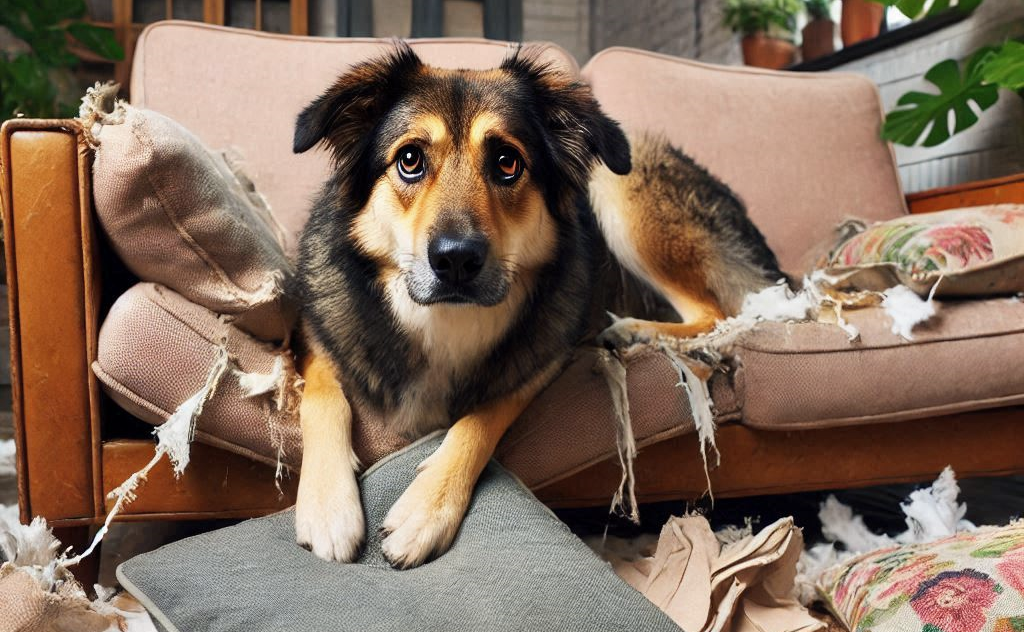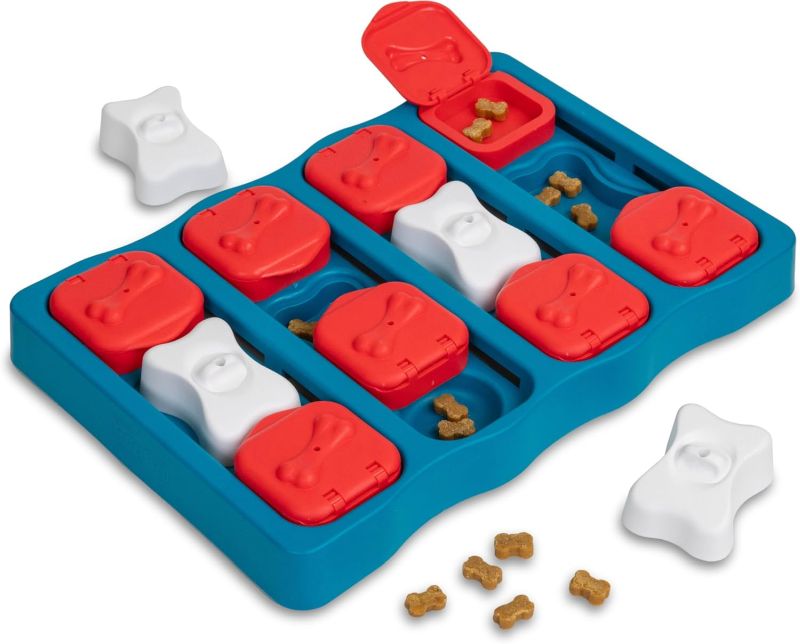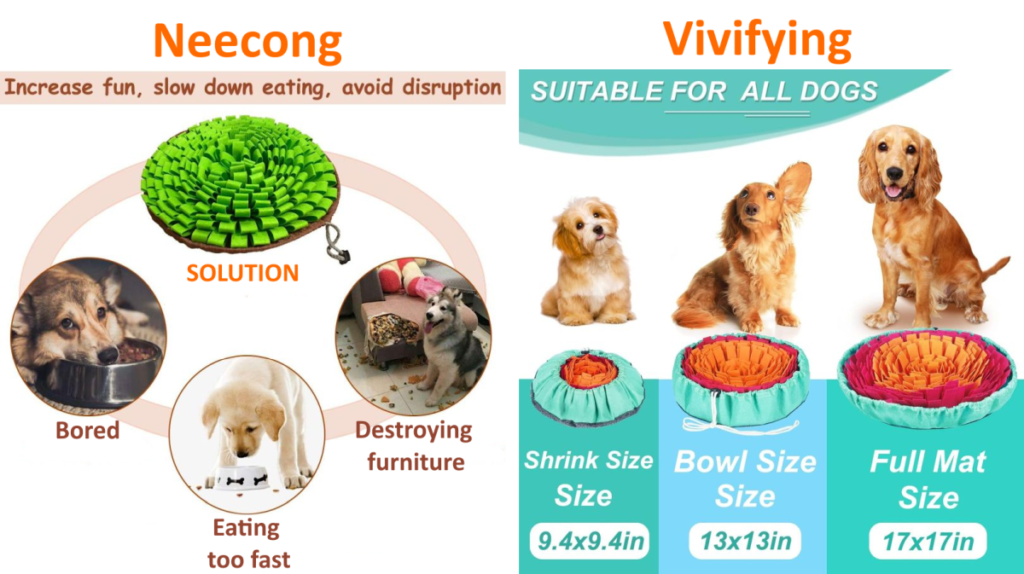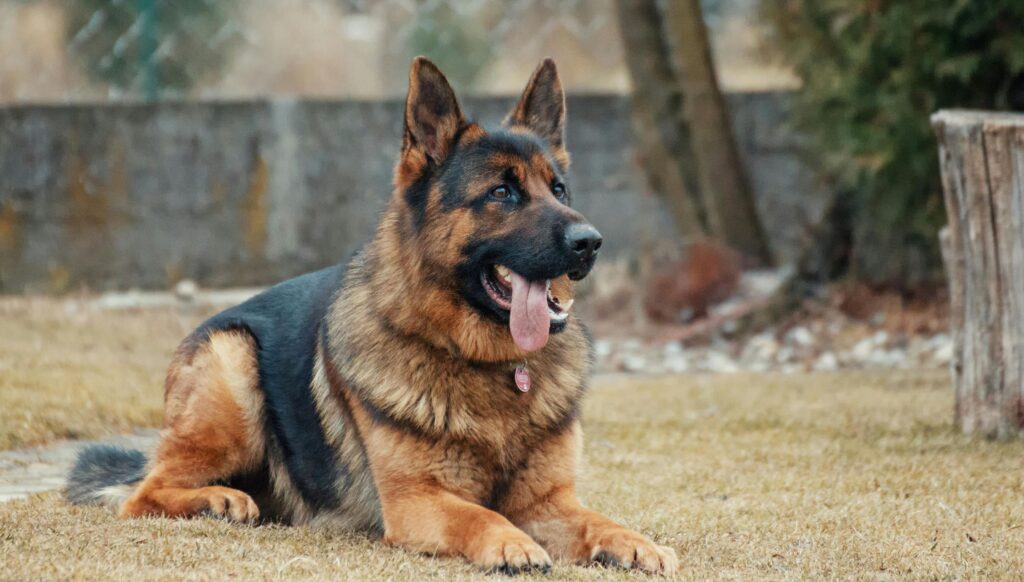How to Stop Your Dog from Chewing Furniture

Your dog’s chewing might seem relentless, and the chewed-up legs of your dining room chairs are starting to look more like works of abstract art. We’ve all been there – coming home to find a new casualty in the battle of keeping your furniture chew-free.
Whether your pup is a teething puppy, a curious explorer, or a bored adult dog, understanding the reasons behind this behavior and taking the right steps can help you bring peace back to your household.
In this guide, we’ll explore why dogs chew and how you can effectively stop your dog from chewing furniture once and for all.
Why Dogs Chew Furniture
Before diving into solutions, it’s important to understand why your dog chews on your furniture. By understanding the root cause, you’ll be better equipped to stop the behavior. Here are some of the most common reasons:
- Teething: If your dog is a puppy, chewing is a natural part of their development. Puppies go through a teething phase that can be quite uncomfortable, and chewing helps alleviate that discomfort.
- Boredom or Anxiety: Dogs need physical and mental stimulation. When they’re left alone for long periods without activities, they may chew furniture out of boredom or anxiety.
- Exploration: Dogs explore the world with their mouths. If your dog finds your furniture enticing, it’s likely they’re trying to learn more about their environment.
- Attention-Seeking: If your dog feels they’re not getting enough attention, chewing furniture is one way to get a reaction from you—even if it’s a negative one.
How to Stop Your Dog from Chewing Furniture
Provide Chew Toys
A simple solution to furniture-chewing is to give your dog something better to chew on! Offer your dog a variety of chew toys to make your furniture less appealing. Make sure to pick toys that are appropriate for your dog’s size and chewing strength. Here are some highly-rated products that might help:
- KONG Classic Dog Toy: This is an incredibly popular toy among dog owners, and it’s designed to satisfy a dog’s natural instinct to chew. You can stuff it with treats or even freeze it with peanut butter for extra fun. Dogs love the challenge, and it’s an excellent way to keep them entertained.
- Benebone Wishbone Durable Dog Chew Toy: This flavored chew toy is highly rated and comes in flavors like real bacon, peanut butter, or chicken. It’s tough, durable, and can keep your dog engaged for hours, providing a positive outlet for their chewing behavior.
Use Deterrent Sprays
If your dog insists on chewing the table legs or your favorite chair, deterrent sprays might come in handy. These sprays have an unpleasant taste (for your dog), making your furniture far less tempting. Just make sure to follow the instructions on the product and test a small area of your furniture first.
- TAIFF No Chew Spray for Dogs: This anti-chew spray is one of the top-rated options all-natural, safe ingredients such as capsicum, cinnamon, citrus, lemon juice, pepper, and water. It’s safe for dogs, shoes and furniture, but very effective in deterring chewing behavior.
- Grannick’s Bitter Apple Spray: Another well-known and highly-ranked deterrent, this spray has been trusted by dog owners for years. It’s safe and easy to apply to the surfaces that your dog tends to chew.
Redirect Their Attention
Whenever you see your dog chewing something they shouldn’t, gently redirect them to an appropriate chew toy. It’s crucial to avoid yelling or punishing your dog, as this could make them anxious and worsen the chewing behavior. Instead, calmly remove the item and provide a proper toy.
For example, if your dog is chewing the couch, say something like “No” firmly but calmly, then hand them a chew toy like the KONG. Praise your dog once they start chewing the toy instead. Positive reinforcement is key in helping your dog learn what is and isn’t acceptable.
Crate Training and Restricted Access
If your dog’s chewing is severe and happens while you’re away, crate training might be helpful. Crates aren’t meant to be a punishment – instead, they serve as a safe space where your dog can relax. Start by slowly introducing your dog to the crate with treats and praise, making sure they associate it with positive feelings. Once they’re comfortable, the crate can be a place they go when you’re not home, preventing them from having access to the furniture.
Alternatively, use baby gates to restrict access to rooms where your dog tends to chew. This helps you manage your dog’s environment and prevents them from getting into trouble while unsupervised.
Exercise and Mental Stimulation
One of the main reasons dogs chew furniture is boredom. Your dog needs both physical and mental stimulation to stay happy. Make sure to provide enough exercise every day. The exact amount depends on your dog’s breed, size, and energy level, but a walk twice a day combined with some playtime is a good starting point.
Consider mental stimulation toys like the following:
- Outward Hound Nina Ottosson Puzzle Toy: This highly-rated interactive toy is perfect for keeping your dog’s mind busy. They have to figure out how to get to the treats hidden inside, which will keep them entertained and prevent them from seeking out other (more destructive) activities.

- Snuffle Mats: A snuffle mat is a fun way to encourage your dog to use their nose. You can hide kibble or treats in the mat, and your dog will have to use their sniffing skills to find them. It’s a great way to keep your pup occupied for a while and provides fantastic mental enrichment. The Neecong and the Vivifying snuffle mats for dogs are both highly ranked by users.

Address Separation Anxiety
If your dog’s chewing is due to separation anxiety, you may notice that they only chew when you’re not home. To help with separation anxiety, try these tips:
- Start with Short Absences: Practice leaving your dog alone for short periods, gradually increasing the time. Reward your dog when they stay calm while you’re gone.
- Create a Safe Space: Make a comfortable area for your dog that they can retreat to while you’re away. Include a bed, some toys, and items that have your scent (like an old t-shirt) to comfort them.
- Use Calming Aids: Products like Adaptil Dog Calming Pheromone Spray may help. It emits a synthetic version of a calming pheromone that can make your dog feel more at ease while you’re gone.
Offer Frozen Treats for Teething Puppies
If your dog is teething, frozen treats can be a lifesaver. The cold helps to soothe their sore gums, and giving them something they’re allowed to chew on will keep them away from the furniture.
- Frozen Carrots: Many puppies love chewing on a frozen carrot. It’s safe, inexpensive, and healthy!
- Frozen KONG with Peanut Butter: Stuff a KONG toy with peanut butter or plain yogurt and freeze it. This not only provides relief for sore gums but also keeps your puppy occupied.
Train Commands Like “Leave It”
Training basic commands such as “Leave it” can be very helpful in managing unwanted chewing behavior. Practice this command by using high-value treats. Hold a treat in front of your dog and say “Leave it.” The moment they look away from the treat, give them a different treat as a reward. Practicing this often will help your dog understand when you want them to stop focusing on an item, such as your favorite chair leg.
Supervise When Possible
Supervision is crucial, especially during training. Whenever you’re home, keep an eye on your dog to make sure they’re not chewing on furniture. You can even use a leash indoors to help guide your dog away from items they shouldn’t chew. This gives you an opportunity to quickly intervene and redirect your dog to appropriate chewing outlets.
Seek Professional Help If Needed
If the chewing behavior is extreme and nothing seems to work, consider seeking help from a professional dog trainer or behaviorist. Sometimes, dogs need a customized training plan to address the behavior, and a professional can provide that. A behaviorist can help identify any underlying issues such as severe anxiety that might be contributing to the problem.
Products That Can Help You Curb Chewing Behavior
Here are a few other products that other dog owners have found useful when dealing with excessive chewing. These are all highly rated and well-loved by both dogs and their owners:
Nylabone Power Chew Textured Ring Toy: This durable chew toy is great for aggressive chewers, and it comes in various flavors to keep your dog interested. It’s an excellent alternative to chewing on furniture.
PetSafe Busy Buddy Twist ‘n Treat Toy: This toy can be filled with treats and twisted to make it easier or harder for your dog to get to them. It’s ideal for keeping your dog entertained when you need some quiet time.
VetriScience Composure Behavioral Health Bite-Sized Dog Chews: These chews are designed to help reduce anxiety and promote relaxation. They might be useful if your dog’s chewing stems from stress or anxiety.
Final Thoughts
Stopping your dog from chewing furniture is all about providing alternatives, reinforcing positive behavior, and managing the root causes. Patience is essential – dogs need time to learn, and chewing is often instinctual. Through redirection, offering plenty of chew-friendly options, using deterrents, and maintaining a consistent training routine, you’ll be able to curb this behavior.
Remember that every dog is different, and what works for one might not work for another. Try different methods until you find what works best for your pup, and always approach training with a lot of love and patience. By making sure your dog’s needs are met physically, mentally, and emotionally, you’ll set them up for success and keep your furniture intact!

As an Amazon Associate, I earn from qualifying purchases.